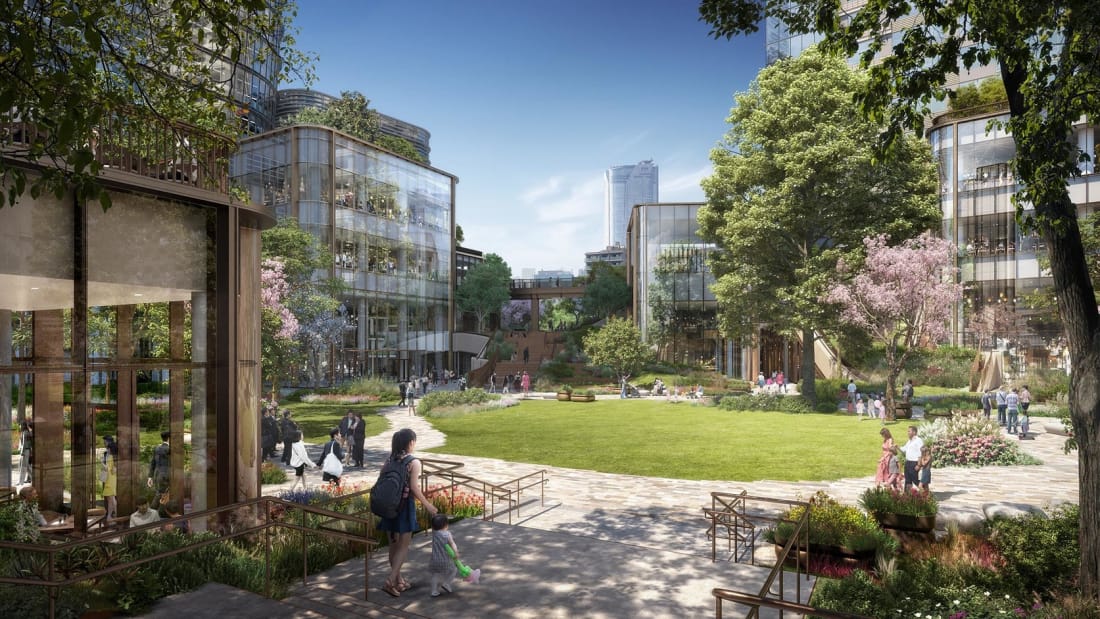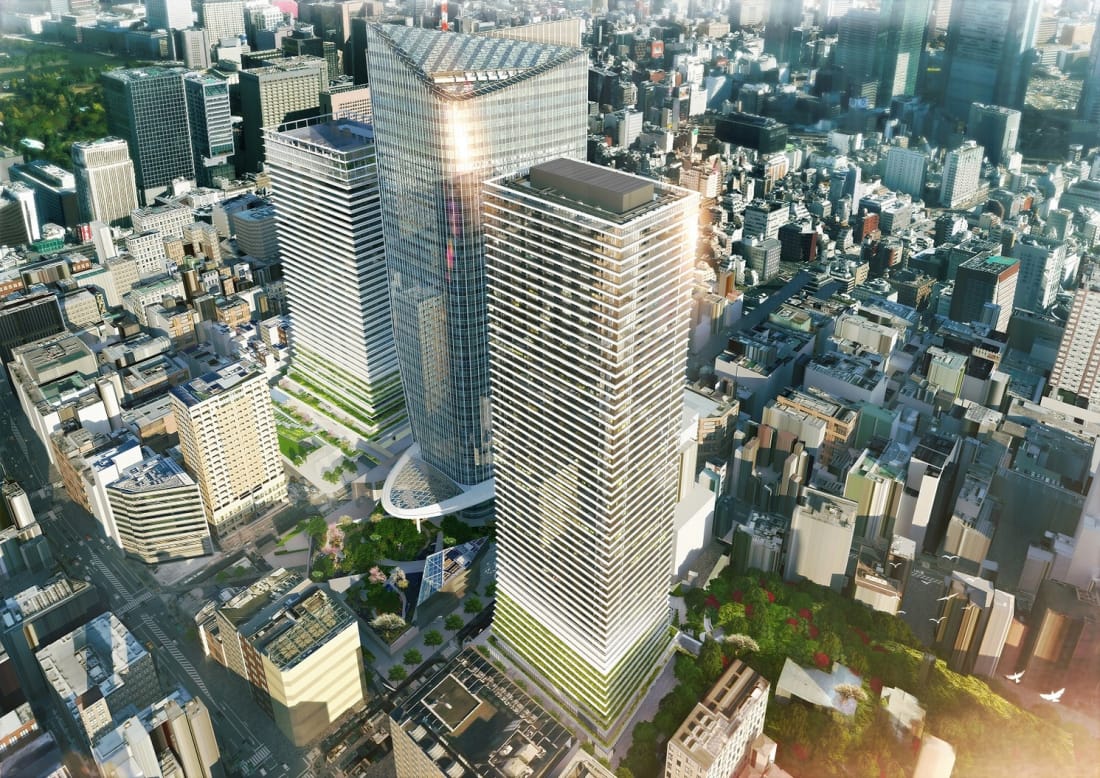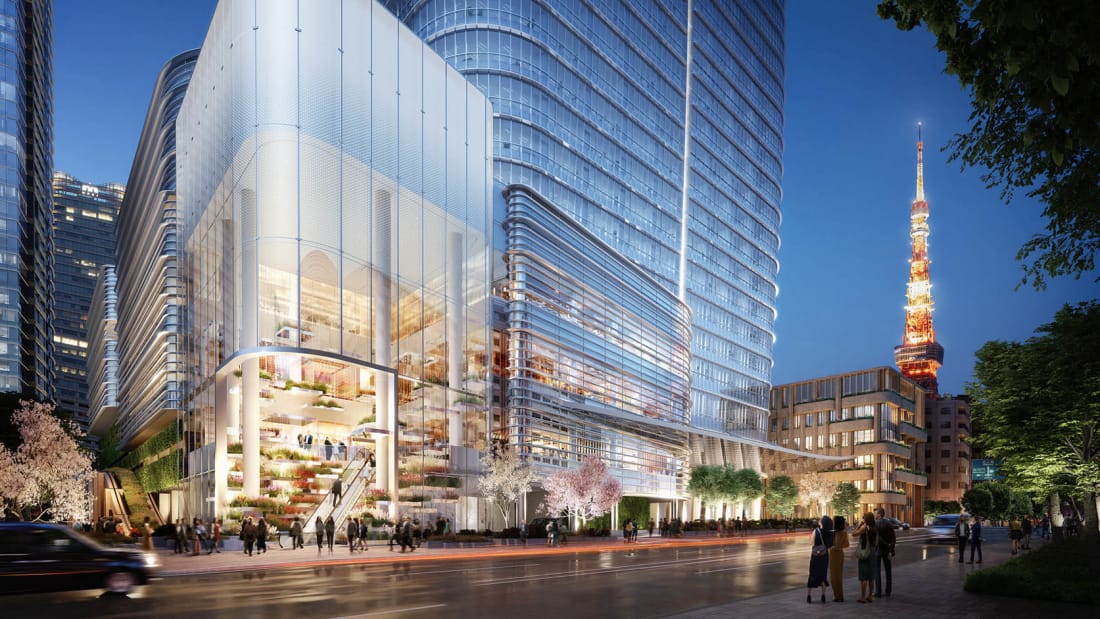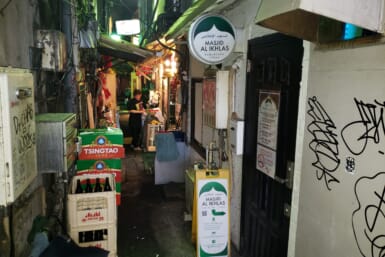Buildings currently account for almost 40 percent of global carbon emissions. With energy demands of residential and commercial buildings continuing to grow significantly, an efficient and healthy structure can lead to a great reduction in consumption. One organization leading the way in terms of sustainable and green buildings is Mori Building Company. The Japanese family-owned property management firm has just announced that its major redevelopment and under-construction projects, Toranomon Hills and Toranomon-Azabudai, have been pre-certified under the Platinum-level LEED (Leadership in Energy and Environmental Design) and WELL (WELL Building Standard) rating system.
“Mori Building’s sustainability efforts and its LEED Platinum achievements are fine examples of how organizations can transform their communities,” says Mahesh Ramanujam, US Green Building Council (USGBC) president and CEO in a statement. “We aspire to demonstrate how better buildings, better communities and better cities can help raise the living standard for all.”

LEED grades a building’s sustainability performance, while WELL places its focus on people. Both are important measures in urban development. © Mori Building
What is a LEED and WELL-certified building?
LEED provides a clear framework for “healthy” buildings, encompassing construction phases, interior fit-outs, operations and maintenance. With many famed properties such as the Bank of America and Shanghai Tower receiving this certification, LEED is now recognized as a cornerstone of sustainable architecture and has grown into “the world’s most widely used green building rating system.”
The WELL Building Standard also measures a building’s performance through its impact on the wellness of its occupants. This includes air and water quality, light, fitness and living comfort. Both are administered under third-party USGBC but are not interchangeable. Unlike LEED, WELL does not concern the buildings’ energy or sustainability performance. Instead it focuses on people.

Toranomon Hills cover urban functions such as offices, residential areas, hotels and commercial facilities. © Mori Building
Toranomon Hills
Meaning “the gate of a tiger,” Toranomon Hills is a 248-meter skyscraper with a commanding view of Tokyo’s business district. It’s an architectural icon like its sister building Midtown Tower. Since its opening in 2014, the high-rise has developed into an integrated complex and there’s more to come. Continuing to evolve, two towers will be added – Toranomon Hills Residential Tower and Toranomon Hills Station Tower (tentative names).
After its expansion, the area will cover 800 residential units. There will also be 350 hotel rooms at the luxury hotel Andaz Tokyo and ample green space. The A-1 District of Toranomon Hills Station Tower is set to become Japan’s second largest pre-certified property. It obtained Platinum-level LEED (the highest grade in the system) and WELL pre-certification.

Toranomon-Azabudai Project aims to make a “modern urban village” in the metropolis. © Mori Building
Toranomon-Azabudai District
West of Toranomon Hills, the Toranomon-Azabudai District is another prestigious complex. It will feature three superstructures that are expected to be completed by 2023. One of them will earn the title of the tallest building in Tokyo. They’ve been designed by architectural firm Pelli Clarke Pelli Architects which was established by the Argentine-American architect behind the World Financial Center and Petronas Towers. It is a monumental urban development project showcasing the “intimacy of a small village.”
The idea is to bring forth modern-world issues and tackle them in a sophisticated manner. Electricity will be supplied from entirely renewable sources. The medical and cultural facilities are the core of this project. It comes as no surprise to hear that, like Toranomon Hills, the Toranomon-Azabudai Project has achieved LEED pre-certification. At the same time, it also holds the position as the world’s largest WELL pre-certified property.
With both expected to be certified upon completion, Toranomon-Azabudai and Toranomon Hills are evolving into true international epicenters with a proud eco-conscious badge and a strong focus on community wellbeing.









